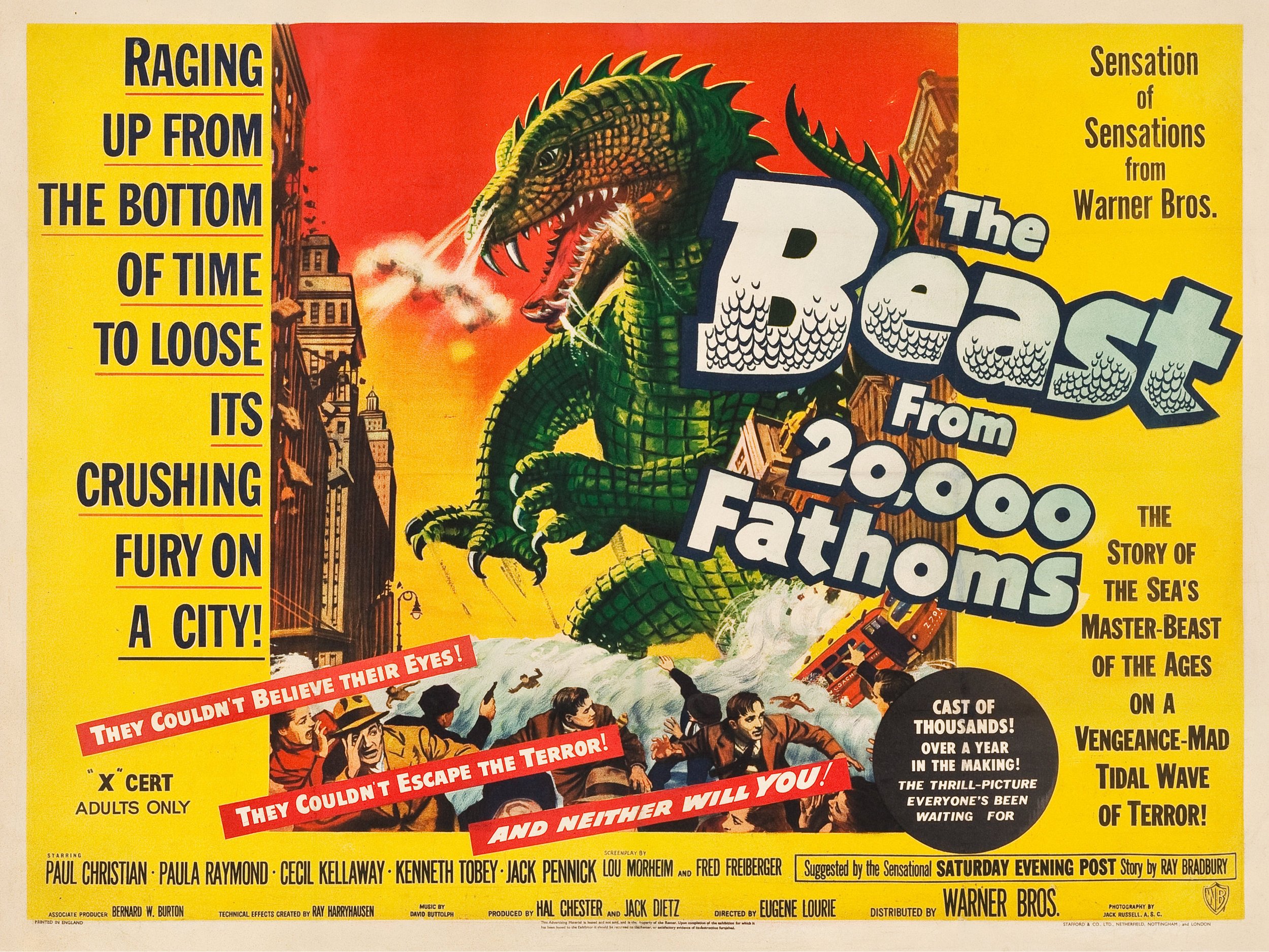The Beast from 20,000 Fathoms could be called the cinematic atomic bomb that awakened the giant cinematic monster and kaiju in the 1950s. It was an unassuming film in many respects, but The Beast from 20,000 Fathoms helped to chart the immediate course for 50s horror, with classic films like Them! And Godzilla following it.
The story is simple, maybe even cliche to us now: a group of scientists, experimenting with the atomic bomb, awaken a prehistoric dinosaur-like creature, which goes on a rampage, indiscriminately attacking everything in its sight.
This beast, a fictional dinosaur called the rhedosaurus, was the first to act as karmic retribution for our nuclear experimentation, a notion that would then be expounded upon by its successors. The Beast from 20,000 Fathoms dwells less on this aspect than the films that follow it. The place of nuclear power in this film are not necessarily evil, nor the core antagonist of the film, but the general direction (the awakening of a prehistoric force to destroy our atomic present) planted the seed for every kaiju film that followed. It might be in the shadow of Hiroshima, but it plays like a spirited monster movie very much out of King Kong’s mold at times, unlike those that follow it.
More than kaiju and monster films, The Beast from 20,000 Fathoms was a mold for disaster films to come, helping to define the formula of big and incredible sequences of destruction, much to the contradicting delight and horror of audiences, which has lasted to this day.
At the same time, The Beast from 20,000 Fathoms is made up of mostly B-list actors reading stiff dialogue, the leading man a scientist of unknown nationality, Prof. Tom Nesbitt (Paul Hubschmid), who finds himself saying such memorable lines as, “Ever use a grenade rifle?”
He is my best friend.
What really sets The Beast from 20,000 Fathoms apart from many monster films of the time is its special effects, specifically the stop motion work of Ray Harryhausen. The Rhedosaurus itself is a definitive creature: while it may resemble a tyrannosaurus at first glance, there’s something dragon-like in its forked tongue and tail. The animation that brings it to life is stunningly fluid and graceful, even as it stomps through the Arctic, destroys a lighthouse, and destroys Coney Island. Many of Harryhausen’s most important innovations with foregrounds and backgrounds are at work here to create impressively seamless effects work.
The Beast from 20,000 Fathoms may be style over substance; it was an innovator, but, like many innovators, it was improved upon by later passes (especially Godzilla). It’s definitely popcorn fare, though with a conscience and a sense of style, and serves as evidence that well-done spectacle is a valid form of movie-making. While it is not the most magnificent or “deep” monster film out there, it is a necessary film to contextualize the wave of monster films that followed it.


